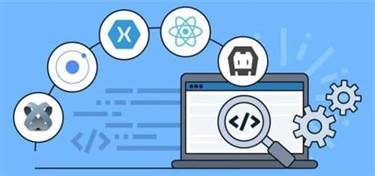This Southern Staple Is Pure Gold The New York Times
Notice, here all the technology that can be swap in the future is not explicitly implemented here. Not even the HttpClient, it’s used an abstraction INetworkClient. Since this emphasizes the operation of concerns throughout the system, to do the testing part is a trivial thing, you can mock whenever you want, just replace the abstraction with the mocking service.

It’s a software that any developer should be able to do improvements and fixes without worrying about breaking something under the hood. Any developer, familiar with the domain, should be able to understand the code, and easily know where to change things.Modifying the view layer should not break any domain logic. Modifying the database modeling should not affect the software’s business rules. You should be able to easily test your domain logic.Then, we should start thinking about separating different concerns into different units of code. If you have very complex business logic, it would make sense to encapsulate it inside of our domain entities. But for most applications, it is usually easier to start with a simpler domain model, and only introduce complexity if it is required by the project.
Amazon SQS and ASP.NET Core for Scalable Messaging: An Easy Guide for .NET Developers
Repositories, external APIs, Event listeners, and all other code that deal with IO in some way should be implemented in this layer. Your Domain models can have Value objects in their attributes, but the opposite is not allowed. As this layer is purely logical, it should be pretty easy to test it, as you don’t have to worry about mocking IO operations. The great thing about this approach is that the migrations will be automatically applied when we create new migrations, further down the road. To learn more about migrations and how to seed data with EF Core in both .NET 5 and .NET 6 check out this article Migrations and Seed Data with Entity Framework Core.
6 Clear Signals Your Onions Are Ready to Be Harvested (Plus Tips … – AZ Animals
6 Clear Signals Your Onions Are Ready to Be Harvested (Plus Tips ….
Posted: Thu, 05 Oct 2023 07:00:00 GMT [source]
Onion architecture is also applicable to microservices when viewing each microservice in isolation. Each microservice has its own model, its own use cases and defines its own external interfaces for retrieving or modifying the data. These interfaces can be implemented with an adapter that connects to another microservice by exposing HTTP Rest, GRPC, Thrift Endpoints, etc. It’s a good fit for microservices, where data access layer not only comprises database, but also for example an http client, to get data from another microservice, or even from an external system. Infrastructure services also referred to as Infrastructure adapters are the outermost layer in onion architecture.
References (
Each layer/circle encapsulates or hides internal implementation details and exposes an interface to the outer layer. All layers also need to provide information that is conveniently consumed by inner layers. The goal is to minimize coupling between layers and maximize coupling within a vertical slice across layers. We define abstract interfaces at deeper layers and provide their concrete implementation at the outermost layer.

In this article, I will tell you about my experience of using onion architecture with a harmonized combination of DDD, ASP.NET Core Web API and CQRS for building microservices. The presentation layer is the default Asp.net core web API project Now we need to add the project references of all the layers as we did before. In the case of the API presentation layer that presents us the object data from the database using the HTTP request in the form of JSON Object.
How we observe, monitor and improve the operational performance of our applications
In the “traditional layered architecture,” the UI and Business logic are allowed direct access to the database and other IT systems (what the author is calling “infrastructure”). In the Onion Architecture, the only thing allowed access to the database are the Domain Entities. You will note that most of the interaction with this architecture occurs at the Service Layer boundary (the outer ring).
In cases where there is both a physical and logical separation of concerns, it is often referred to as n-tiered application where n is the number of separations. In this article, we will deal with Layered Architecture. In this article, We will talk about Onion Architecture In ASP.NET Core and its advantages. We will also together build a WebApi that follows a variant of Onion Architecture so that we get to see why it is important to implement such an architecture in your upcoming projects.
Entity Framework Core in ASP.NET Core 3.1 – Getting Started
Create a new class Entities/Product.cs in the Domain Project. We will start off by creating a Blank Solution on Visual Studio. PS, I use Visual Studio 2019 Comunity which is completely FREE. I highly recommend you to read the article from Jeffrey Palermo about Onion Architecture. This is just my point of view about the Onion Architecture. I respect all the other implementations and perspectives.

Switchable UI Layer (Presentation) – Since we are keeping all the crucial logic away from the presentation layer, it is quite easy to switch to another tech – including Blazor. Database Independent what is onion architecture – Since we have a clean separation of data access, it is quite easy to switch between different database providers. Inside the v1 Folder, add a new empty API Controller named ProductController.
Onion structure optimizes attack robustness of interdependent networks
Application services also referred to as “Use Cases”, are services responsible for just orchestrating steps for requests and should not have any business logic. Application Services interact with other services to fulfil the client’s request. Let’s consider the use case to create an order with a list of items.

This layer is used to communicate between the Repository layer and Main Project where it consists of exposable APIs. In this layer, the service interfaces are kept separate from their implementation for loose coupling and also the separation of concerns. The domain models and services will be inside this layer, containing all the business rules of the software. It should be purely logical, not performing any IO operations at all. The circles represent different layers of responsibility. In general, the deeper we dive, the closer we get to the domain and business rules.
What is Onion Architecture?
Now we can see when we hit the GetAllStudent Endpoint we can see the data of students from the database in the form of JSON projects. The presentation layer is our final layer that presents the data to the front-end user on every HTTP request. I am planning to build a fully-fledged Clean Architecture Solution Template, which you guys can just download and start using for your new projects in no time. Remember we created an IApplicationDBContext Interface in the Application Layer? Create a new folder named Context and add a new class ApplicationDbContext. I have already written a detailed article on MediatR and CQRS patterns in ASP.NET Core 3.1 WebApi Project.
- As this layer is purely logical, it should be pretty easy to test it, as you don’t have to worry about mocking IO operations.
- Onion architecture is built on a domain model in which layers are connected through interfaces.
- The deeper the layer resides inside the Onion, the fewer dependencies it has.
- The Domain project will hold the Domain layer implementation.
- You can find the source code of this implementation on my GitHub.


